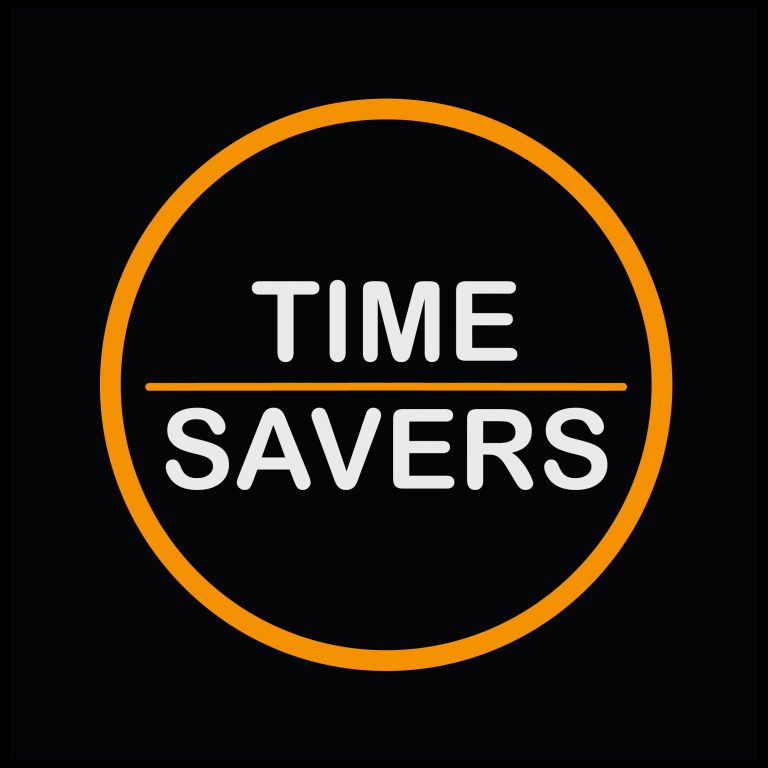Meet Our Heroes
Anthem Outdoors isn’t your typical outdoor recreation retailer. Founded by Evan Dunham, this e-commerce brand entered a competitive industry with a bold promise: complete pricing transparency. In a space where markups are often hidden and pricing feels arbitrary, Anthem Outdoors decided to pull back the curtain and show customers exactly why they’re paying what they’re paying.
The company sells high-quality outdoor recreation products—everything from fishing and camping gear to equipment for paddle sports and water activities. Their customers are outdoor enthusiasts who value durability, quality, and honesty. They’re the kind of people who spend weekends on the water, plan multi-day camping trips, and invest in gear that won’t let them down when it matters most.
Anthem Outdoors ships across the continental United States, serving a growing community of customers who appreciate the brand’s straightforward approach and commitment to customer service. But despite having a unique value proposition and a well-curated product line, the brand was struggling with one critical problem: their ads weren’t working.
Their Goals
Evan came to Digital Time Savers with a clear set of objectives, all centered around one core need: profitability.
Up until that point, every ad campaign Anthem Outdoors had run—whether on Google, Facebook, or Instagram—had failed to generate meaningful revenue. The brand had launched with high hopes, running a couple of campaigns on social media when the business first opened. Those ads didn’t drive sales. Later, they tried Google Shopping, which also underperformed and was eventually paused in April 2023 after months of burning budget with little return.
Evan’s goals were straightforward but ambitious:
- Make ads profitable. This was non-negotiable. The brand needed campaigns that didn’t just generate clicks, but actually drove sales and revenue.
- Increase brand awareness. Anthem Outdoors had a unique story to tell, and they needed to get in front of the right people—outdoor enthusiasts who would resonate with their transparency and quality.
- Boost sales and customer trust. The ads needed to do more than inform. They needed to persuade, entice, and ultimately convince customers that Anthem Outdoors wasn’t just another retailer—it was the brand they needed.
Evan also wanted the ads to reflect the brand’s core values: transparency, quality, and exceptional customer service. The messaging had to be authentic, not salesy. It had to feel like a conversation, not a pitch.
The Challenge
When we first dove into Anthem Outdoors’ advertising history, the problems became clear almost immediately.
The Google Shopping campaign had been poorly structured from the start. Targeting was too broad, the product feed wasn’t optimized, and there was no clear strategy for bidding or budget allocation. The campaign was essentially throwing money at a wall and hoping something would stick. It didn’t.
The Facebook and Instagram ads that ran at launch were similarly unfocused. They lacked compelling creative, didn’t speak to the brand’s unique value proposition, and failed to connect with the right audience. Without a clear understanding of who Anthem Outdoors was trying to reach—or how to reach them—the campaigns fizzled out without generating a single sale.
Then there was the geographical targeting issue. The initial Google Shopping campaign focused on Midwest states, which made sense given the brand’s location and the outdoor culture in that region. But when the campaign expanded to Southern states like Alabama, Georgia, and Florida, performance dropped even further. The targeting was reactive, not strategic, and it showed.
Beyond the technical issues, there was a deeper challenge: Anthem Outdoors hadn’t yet figured out how to translate their unique value proposition into ad messaging that resonated. Transparency in pricing is a powerful differentiator, but if your audience doesn’t understand why it matters, it won’t move the needle.
The brand also faced the challenge of competing in a crowded market. Companies like Hodges Marine, Aventurion, and Wholesale Marine had larger budgets, more established reputations, and years of brand recognition. Anthem Outdoors needed to carve out its own space—and do it with a modest starting budget of just $1,000 per month.
Our Process
We knew that turning things around for Anthem Outdoors would require a complete reset. This wasn’t about tweaking a few settings or running a new creative. It was about building a strategy from the ground up—one that aligned with the brand’s values, spoke to the right audience, and was designed to drive profitable sales.
Phase One: Audience Research and Strategic Positioning
The first step was getting crystal clear on who Anthem Outdoors was really selling to. Evan had a good sense of his ideal customer—outdoor enthusiasts who valued quality and durability—but we needed to dig deeper.
We started by analyzing the brand’s existing customer base and identifying patterns in behavior, interests, and demographics. We also looked at competitor audiences and searched for gaps in the market. What we found was that Anthem Outdoors had a unique opportunity to appeal to a specific subset of outdoor enthusiasts: people who weren’t just looking for cheap gear, but who wanted to make informed, confident purchasing decisions.
These were customers who cared about sustainability, who researched products before buying, and who valued brands that were upfront and honest. They were active on social media, engaged with outdoor lifestyle content, and were willing to pay a premium for gear that delivered on quality.
We also redefined the geographical targeting strategy. Instead of casting a wide net across multiple states, we focused on regions with high concentrations of outdoor recreation activity—areas near lakes, rivers, national parks, and coastal regions where fishing, camping, and water sports were part of the culture.
Phase Two: Campaign Architecture and Creative Strategy
With a clear understanding of the audience, we rebuilt the advertising infrastructure from scratch.
For Google, we restructured the Shopping campaign entirely. We optimized the product feed, ensuring that product titles, descriptions, and images were clear, compelling, and aligned with search intent. We segmented products into strategic ad groups based on category and price point, which allowed us to allocate budget more efficiently and bid more competitively on high-intent searches.
We also implemented a search campaign to complement the Shopping ads, targeting keywords related to outdoor recreation gear, fishing equipment, camping supplies, and paddle sports. The goal was to capture customers at different stages of the buying journey—from early research to ready-to-purchase.
For Facebook and Instagram, we took a storytelling approach. Instead of generic product ads, we created campaigns that highlighted Anthem Outdoors’ transparency and customer-first philosophy. We showcased the pricing breakdown page on the website, used customer testimonials, and featured real-life scenarios of people using the gear on camping trips, fishing outings, and paddleboarding adventures.
The creative was authentic and human. We used video content, carousel ads, and static images that felt like they came from a friend’s Instagram story, not a corporate marketing department. The messaging was conversational, emphasizing trust, quality, and the idea that outdoor gear should be an investment, not a gamble.
Phase Three: Testing, Optimization, and Scaling
Once the campaigns launched, we entered a rigorous testing and optimization phase. We tested different ad creatives, audience segments, bidding strategies, and messaging angles to see what resonated most.
On Facebook and Instagram, we ran A/B tests on ad copy, testing headlines like “Gear You Can Trust” versus “Transparent Pricing, Unbeatable Quality.” We tested video ads against static images, lifestyle shots against product close-ups, and broad interest targeting against lookalike audiences based on past purchasers.
On Google, we monitored search term reports closely, adding negative keywords to eliminate wasted spend and adjusting bids based on performance data. We also experimented with dynamic remarketing to bring back visitors who had browsed the site but hadn’t yet converted.
As we identified winning combinations, we scaled them. We increased budget on high-performing campaigns, expanded audience targeting to similar segments, and refined the messaging to double down on what was working.
Throughout the process, we maintained close communication with Evan, keeping him in the loop on performance, sharing insights, and adjusting strategy based on his feedback and evolving business goals.
Results
Within the first 90 days of working together, Anthem Outdoors saw a complete transformation in advertising performance.
The Google Shopping and Search campaigns that had once drained budget without results became profitable engines of growth. We achieved a 3.8x return on ad spend (ROAS), meaning that for every dollar Anthem Outdoors spent on Google Ads, they brought in $3.80 in revenue. That’s a complete turnaround from the unprofitable campaigns that had been paused just months earlier.
On Facebook and Instagram, the new storytelling approach and refined targeting drove a 4.2x ROAS, with the brand seeing its first-ever profitable social media campaigns. The ads not only generated sales but also built brand awareness and trust, with engagement rates climbing and customers leaving positive feedback about the brand’s transparency.
Overall, Anthem Outdoors generated over $42,000 in ad-attributed revenue in the first three months, with a blended ROAS across all platforms of 4.0x. That’s not just profitable—it’s sustainable.
Beyond the numbers, the brand saw a shift in customer behavior. People were visiting the pricing transparency page, engaging with the brand on social media, and reaching out to customer service with questions about products. The ads weren’t just driving transactions—they were building relationships.
Evan finally had the profitable ad campaigns he’d been searching for, and more importantly, he had a scalable system that could grow with the business. Anthem Outdoors was no longer just another outdoor gear retailer. It was a brand with a voice, a strategy, and a future.






